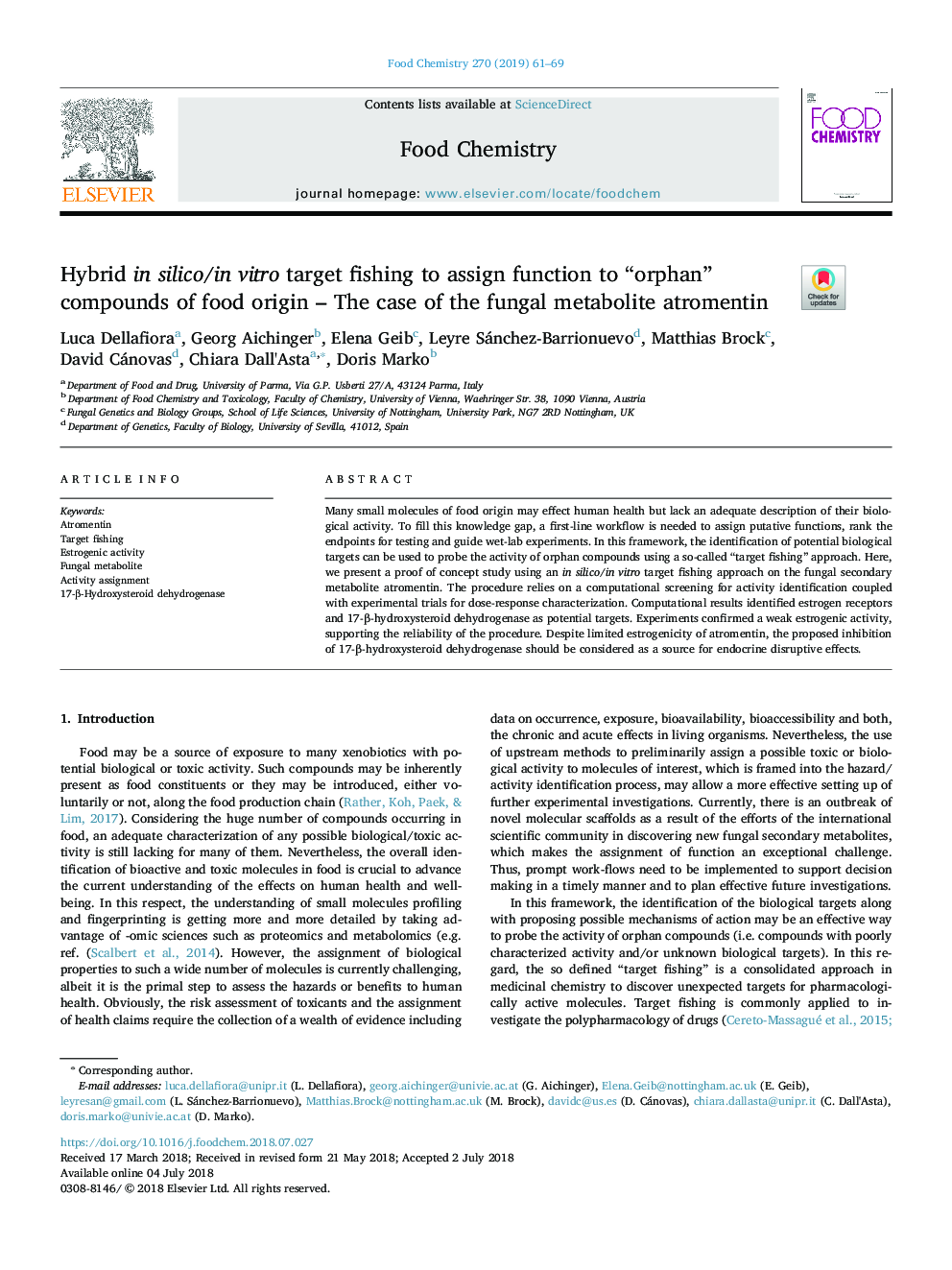| Article ID | Journal | Published Year | Pages | File Type |
|---|---|---|---|---|
| 7583839 | Food Chemistry | 2019 | 9 Pages |
Abstract
Many small molecules of food origin may effect human health but lack an adequate description of their biological activity. To fill this knowledge gap, a first-line workflow is needed to assign putative functions, rank the endpoints for testing and guide wet-lab experiments. In this framework, the identification of potential biological targets can be used to probe the activity of orphan compounds using a so-called “target fishing” approach. Here, we present a proof of concept study using an in silico/in vitro target fishing approach on the fungal secondary metabolite atromentin. The procedure relies on a computational screening for activity identification coupled with experimental trials for dose-response characterization. Computational results identified estrogen receptors and 17-β-hydroxysteroid dehydrogenase as potential targets. Experiments confirmed a weak estrogenic activity, supporting the reliability of the procedure. Despite limited estrogenicity of atromentin, the proposed inhibition of 17-β-hydroxysteroid dehydrogenase should be considered as a source for endocrine disruptive effects.
Related Topics
Physical Sciences and Engineering
Chemistry
Analytical Chemistry
Authors
Luca Dellafiora, Georg Aichinger, Elena Geib, Leyre Sánchez-Barrionuevo, Matthias Brock, David Cánovas, Chiara Dall'Asta, Doris Marko,
